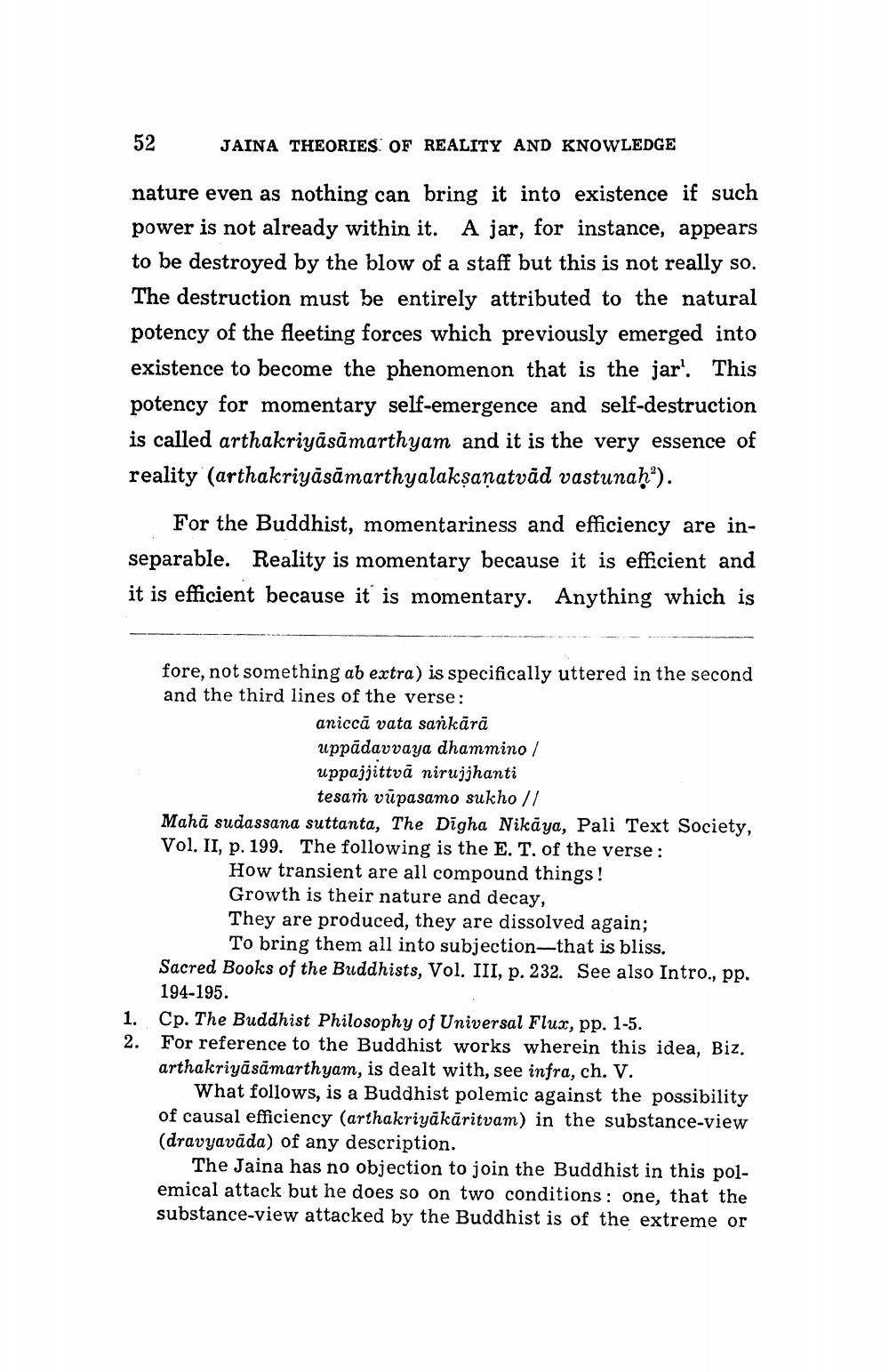________________
52
JAINA THEORIES OF REALITY AND KNOWLEDGE
nature even as nothing can bring it into existence if such power is not already within it. A jar, for instance, appears to be destroyed by the blow of a staff but this is not really so. The destruction must be entirely attributed to the natural potency of the fleeting forces which previously emerged into existence to become the phenomenon that is the jar'. This potency for momentary self-emergence and self-destruction is called arthakriyāsāmarthyam and it is the very essence of reality (arthakriyāsāmarthyalakṣaṇatvād vastunah”).
For the Buddhist, momentariness and efficiency are inseparable. Reality is momentary because it is efficient and it is efficient because it is momentary. Anything which is
fore, not something ab extra) is specifically uttered in the second and the third lines of the verse:
aniccā vata sankārā uppādavvaya dhammino / uppajjittvā nirujjhanti
tesam vūpasamo sukho // Mahā sudassana suttanta, The Digha Nikāya, Pali Text Society, Vol. II, p. 199. The following is the E. T. of the verse:
How transient are all compound things! Growth is their nature and decay, They are produced, they are dissolved again;
To bring them all into subjection—that is bliss. Sacred Books of the Buddhists, Vol. III, p. 232. See also Intro., pp.
194-195. 1. Cp. The Buddhist Philosophy of Universal Flux, pp. 1-5. 2. For reference to the Buddhist works wherein this idea, Biz. arthakriyāsāmarthyam, is dealt with, see infra, ch. V.
What follows, is a Buddhist polemic against the possibility of causal efficiency (arthakriyākāritvam) in the substance-view (dravyavāda) of any description.
The Jaina has no objection to join the Buddhist in this polemical attack but he does so on two conditions: one, that the substance-view attacked by the Buddhist is of the extreme or




